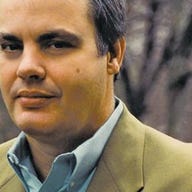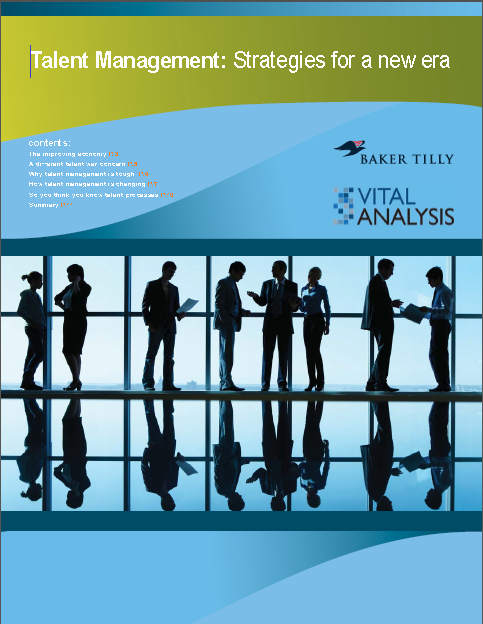Future of Talent Management - The Economy, Workers, etc. Have Changed Things

This Fall, Ann Blakely (of Baker Tilly Consulting) and I interviewed a number of HR executives. We had a half dozen or so HR hypotheses we wanted to examine in this changing economy. For example, was a resurging economy creating more emboldened and mobile workers and how were firms dealing with this?

We were right on most of our hypotheses and surprised by some. Most of the surprises came though in our underestimation how deep the change was out there.
For example, I was not prepared for the intensity of how some HR professionals perceive traditional HR software and processes. When I spoke with Sungevity’s Chief People Officer, Susan Hollingshead, she had some very important commentary for today’s new cloud-based HR and Talent Management vendors. In the SaaS solution space, she argued that “small-to-mid-sized businesses don’t have the staff or budget to exploit new human capital technology.” She added, “there are very few LMS solutions at a compelling price point.”
Her points were echoed by others who see HR departments taking on an ever greater amount of IT functions, like application integration, as they acquire more cloud-based HR/TM solutions. For some, it’s getting expensive if not downright cost prohibitive.
Susan and I also had a great conversation about all of these new, non-traditional HR applications from firms like Entelo, LinkedIn, Facebook, etc. Susan has already seen how important it is for recruiters to scour the on-line water coolers that today’s job holders/seekers hang out at. “Every discipline has its own special discussion board/water cooler,” she added.
Susan also had more to say about LinkedIn (see this recent post on LinkedIn and the move to PERSON-based HR solutions). She said “their star is ascending”. LinkedIn’s “evolving recruiting capability has utility but is hard to measure”.
But the most important aspect of our conversation was probably around the realization of how older HR techniques, processes or technologies just aren’t as relevant anymore. She told me that “Classified ads are dinosaurs” and “The days of contract and retained recruiters are waning and they (the recruiters) use LinkedIn, too.” In other interviews, HR executives expressed similar views around pre-2008 HR processes and technologies: they just aren’t as relevant anymore.
My conversation with Alissa Rogers of BloomReach was really interesting, too. Alissa has a Marketing Degree but leads the talent acquisition process at her firm. Her approach to talent acquisition is innovative and feels like the best of HR and Marketing Automation have been married together to create a new way of acquiring the best talent a firm can get. Alissa partners with her firm’s Marketing organization. Together, they use marketing automation and other tools like Marketo and Salesforce.com to understand what job seekers are looking at online.
Alissa also hosts evening sessions with job prospects – called a Big Brains meet-up group – to help establish her firm’s brand, people, culture and more with job seekers. In her words, employers “must add value, get them to trust and hear you and then they’ll listen to you”.
When I asked Alissa how her firm retains people years longer than competitors, she quickly rattled off four factors:
- Have a fun work environment
- Hire the right people (i.e., hire for smarts and culture fit)
- Have your smartest people develop the new hires
- And, food trucks
That’s right – she gets some of the best gourmet food trucks in the area to park in front of their offices every week.
I also spoke with Zach Pino of Ancestry.com. Zach identified a number of factors that are serving his firm well these days. They've:
- made a serious investment in culture
- gotten very good at finding people who connect with their people/culture
- created the next level of employee engagement
Zach went on to tell me about how the classified ads vs. the virtual water cooler worlds have changed. He said:
- “days of posting a job and reviewing a resume are over”
- “passive recruitment is the biggest thing”
When discussing the competitive and recovering economy, Zach said:
- If you offer competitive pay and benefits, you get at very most a neutral attitude toward the company
- Culture and career are the stuff that makes people stay
My interviews concluded with a call with Carolyn April, the author of a June 2013 COMPTIA report titled “Generational Research on Technology and its Impact in the Workplace”. She surveyed over 700 people on the different demographics of modern workforce. Highlights from the call included:
- “Folks are going to have to map to what their talent pool really is”
- “Candidates look at how prospective employers use technology and then decide if they’d want to work for them”
Re: job vs. career, Carolyn added:
- Today’s workers “consider training essential to their careers”
- Younger generation workers want training via mobile devices, including gamification techniques
- “It’s a stereotype that younger generation workers know it all. That isn’t true – they want training”
Her counsel for employers:
- “Within 5-10 years, the job force will completely shift from 45+ old workers to people in their 20s and 30s. That group of new workers have always grown up with technology”
- “Learn how to manage a multi-generational workforce”
I've heard, anecdotally from several consultants, that the generational shift in the workforce is a major concern within many Fortune 500 firms.
I could go on and on but suffice to say, HR within and external to an organization is changing – BIG TIME. The economy along with new technologies and an empowered worker are all creating a new environment for attracting and retaining talent. The smart firms have adopted a modern (i.e., a post 2008 collection of technologies, processes and talent) approach to winning the current war for talent. It's a different business world out there with a different work force and new technologies available to all. But, if I learned anything from these interviews, it was the level of innovation and resourcefulness that the best HR executives are using to attract and retain talent that was really impressive.
The paper I did with Ann goes into this issue in much more detail. If you’d like a copy of that, click here. It's free and a dozen or so pages long - enjoy.